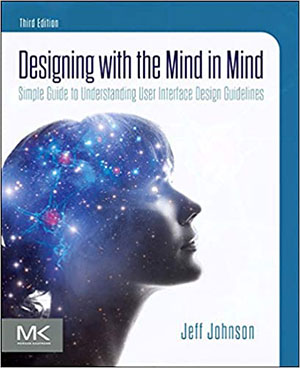Research: Human Factors Research
UXmatters has published 28 articles on the topic Human Factors Research.
Top 3 Trending Articles on Human Factors Research
-
Design for Fingers, Touch, and People, Part 1
March 6, 201711 CommentsPeople have now read and referred to my 2013 column How Do Users Really Hold Mobile Devices? almost too much for my comfort. Why? Because, since I wrote that column, I have continued to do research, put my findings into practice for real products, written additional articles, and presented on that topic. In the years since then, I’ve learned a lot more about how people hold and touch their phones and tablets—a lot of which I did’t expect. And that’s the problem with my old columns. I made some assumptions that were based on observations of the usage of desktop PCs, standards for older types of interactions, and anecdotes or misrepresented data. However, through my later research and better analysis, I’ve been able to discard all of those erroneous assumptions and reveal the truth.
All too often, I see people referring to my oldest, least-accurate columns on this topic. Sometimes readers combine my obsolete data with other out-of-date information, then draw their own incorrect conclusions. I hope put a stop to that now with this updated overview of everything I know about how people interact with touchscreen devices and how you can use that information to design better digital products. Read More
-
Abundance of Choice and Its Effect on Decision Making
December 6, 2010In my last column, “Decision Architecture: Helping Users Make Better Decisions,” I talked about how people make decisions and what affects their decision-making process. Although it’s a common assumption that people are largely goal oriented and know what they want, research on decision making has shown that our preferences are actually quite malleable—especially when we encounter something new.
What affects decision outcomes most is the actual context in which people make decisions. All kinds of things affect decision making—the type of decision someone is making, the decision maker’s level of expertise, the number of options available, the way and order in which options are presented, and many others. This column examines how the number of available options affects the decision-making process. Read More
-
Designing with the Mind in Mind
November 9, 2020This is a sample chapter from the 3rd edition of Designing with the Mind in Mind, by Jeff Johnson. 2020 Morgan Kaufmann.
Chapter 15: We Make Errors
 People make mistakes and commit errors; it’s a fact of life. Nobody is perfect. Designers of digital technology have to live with that fact. Actually, good designers do more than live with it; their designs take it into account. They avoid designs that make it likely for users to make errors (Norman, 2014). They create digital products and services that help people avoid and recover from errors.
People make mistakes and commit errors; it’s a fact of life. Nobody is perfect. Designers of digital technology have to live with that fact. Actually, good designers do more than live with it; their designs take it into account. They avoid designs that make it likely for users to make errors (Norman, 2014). They create digital products and services that help people avoid and recover from errors.Mistakes Versus Slips
When categorizing the types of errors people make, the first distinction is between mistakes and slips (Norman, 1983a; Reeves, 2010). Read More
All Articles on Human Factors Research
- Book Review: Nudge
- Designing with the Mind in Mind
- Design for Fingers, Touch, and People, Part 1
- The Importance of Consistency in Interaction Models
- Understanding Us: A New Frontier for User Experience
- Mental Models and User Experience
- How to Balance Design Guidelines for Children
- Insights on Switching, Centering, and Gestures for Touchscreens
- Interface Design for Learning: Design Strategies for Learning Experiences
- Gender-Oriented Design in Light of the Extreme Male Brain Model
- Designing with the Mind in Mind: Simple Guide to Understanding User Interface Design Guidelines, Second Edition
- Common Misconceptions About Touch
- The Power of Faces in User Experience
- Using Neuroscience to Inform Your UX Strategy and Design
- Eyes on the Road or Mind on the Road?
- Designing with the Mind in Mind: An Interview with Jeff Johnson
- There Should Be Limits to Usability
- The Nature of Choice Sets and Their Effect on Decision Making
- The Power of Comparison: How It Affects Decision Making
- Abundance of Choice and Its Effect on Decision Making
- Decision Architecture: Helping Users Make Better Decisions
- Updating Our Understanding of Perception and Cognition: Part II
- Updating Our Understanding of Perception and Cognition: Part I
- The Value of Education in Research and Human Factors
- Designing with the Mind in Mind
- Text Treatment and the User Interface
- Ensuring Accessibility for People With Color-Deficient Vision
- Personas, Goals, and Emotional Design